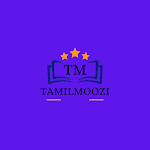V. Answer the following briefly
1. Discuss how the age of speculation made humans become conscious and knowledgeable.
➢ In the course of evolution, humans became conscious and knowledgeable.
➢ They turned curious and began to think and ask questions about nature, organisms and the
world around them.
2. Write a note on the impact of pastoralism on the prehistoric people in Tamil Nadu.
➢ The people in the Iron Age practiced agriculture, domesticated cattle and sheep.
➢ Cattle rearing became their main occupation.
➢ Humans lived in permanent house to domesticate animals and for agriculture.
3. List out the features of Megalithic Burial types.
➢ Kodakkal - umbrella stone
➢ Paththikal - hood stone
➢ Cist - stone enclosure buried under earth.
➢ Ums - pottery jars used for burials
➢ Toppikkal - hat stone
➢ Dolmens - table like structure
➢ Menhir -pillar like stones
➢ Sarcophagi - burial made of terracotta
4. Examine the tool making technical skills of lower Palaeolithic people.
➢ Hand axes and cleavers are the important tool types of the Lower Palaeolithic period.
➢ The tools had physical symmetry and convey the humans' cognitive skills.
➢ The human ancestors flaked large stone blocks and designed various tools including hand axes.
➢ The hand axe tools are also known as "Acheulian".
➢ They also used "bifaces" tools.
VI. Answer the following in detail
1. The developments in the fields of agriculture, pottery and metal tools are considered a
landmark in the life of Megalithic period-Substantiate.
Agriculture and Pastoralism:
➢ The people in the Iron Age practiced agriculture, domesticated cattle and sheep, and some of
the groups were hunting and gathering.
➢ Millets and rice were cultivated.
➢ Irrigation management developed in this period, since many of the megalithic sites are found
nearby rivers and tanks.
In the deltaic regions, irrigation as a technology had developed.
Pottery:
➢ Pottery is an important evidence found in the archaeological sites.
➢ The Iron Age and Sangam age people used the black and red colours to make black ware and
red ware pottery.
➢ Potteries were used for cooking, storage and dining purposes. The black and red ware pottery
had a black inside and a red outside, with lustrous surfaces.
Iron technology and metal tools:
➢ The megalithic burials had abundant iron objects placed in the burials as grave goods.
➢ Weapons such as swords and daggers, axes, chisels, lamps and tripod stands were also found.
➢ Some of these objects were hafted to wooden or bone or horn handles and used.
➢ The iron tools were used for agriculture, hunting, gathering and in battles.
VI. Answer the following in Detail
1. Define the terms Hieroglyphics and Cuneiform with their main features.
Hieroglyphics
➢ Egyptians are well known for their writing system.
➢ Their form of writing is known as hieroglyphic.
➢ Hieroglyphic was used in the inscriptions on seals and other objects.
➢ The heretic, an another form of writing, was used for common purposes.
➢ This form of writing used a pictogram-based
➢ It was developed around 3000 BCE.
Cuneiform
➢ Cuneiform is the Sumerian writing system.
➢ The shape of the letter is in the form of wedge and hence it is called cuneiform.
➢ Evolving around 3000 BCE, it is one of the earliest scripts of the world. The epic of Gilgamesh
was written in this script.
➢ They used this script for commercial transactions and writing letters and stories.
➢ The clay tablets contain loads of information on the Sumerian civilisation.
2. To what extent is the Chinese influence reflected in the fields of philosophy and literature.
Chinese poets and philosophers
1. Lao Tze
2. Confucius
3. Mencius
4. Sun-Tzu
5. Mo Ti
6.Tao Chien
1. Lao Tze
➢ He was the founder of Taoism.
➢ He argued that desire is the root cause of all evils.
2. Confucius
➢ Confucius (551-497 BCE) was famous among the Chinese philosophers.
➢ He was a political reformer.
➢ He insisted on cultivation of one's own personal life.
3. Mencius
➢ Mencius was another well known Chinese philosopher..
➢ He travelled throughout China and offered his counsel to the rulers.
4. Sun-Tzu
➢ Sun- Tzu, a military strategist, wrote the work called Art of War.
➢ The Spring and Autumn Annals is the official chronicle of the state at the time.
➢ The Yellow emperor's 'canon of medicine' is China's earliest book on medicine.
3. Write about the hidden treasure of Indus civilisation.
Indus civilisation
1. Planned Towns
2. Agriculture and Animal Domestication
3. Pottery
4. Metal Tools and Weapons
5. Textiles and Ornaments
6. Weights and Measures
7. Seals, Sealings and Scripts
8. Arts and Amusement
1. Planned Towns:
➢ Well-planned streets and lanes and drainages can be observed in the Harappan towns.
➢ The Harappans used baked and unbaked bricks and stones for construction.
➢ A civic authority perhaps controlled the planning of the towns.
➢ A few of the houses had more than one floor.
➢ The tank called the Great Bath at Mohenjo-Daro is an important structure, well paved with
several adjacent room
9th STANDARD SOCIAL SCIENCE Text Book Questions 2023 – 2024







0 கருத்துகள்